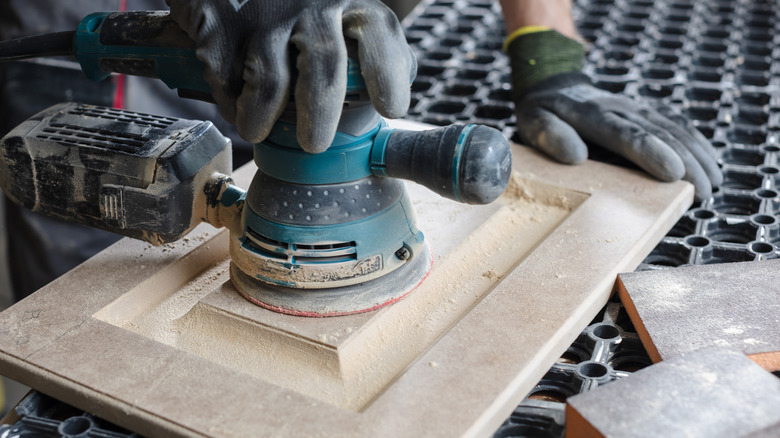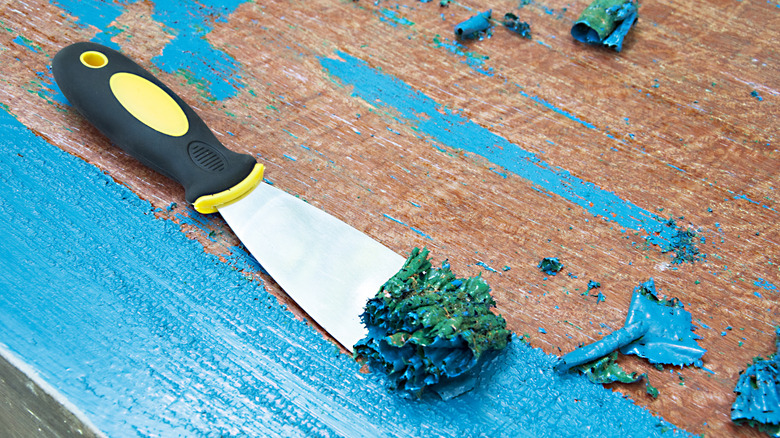Stripping Furniture Vs. Sanding: Which Is Right For Your Project
We may receive a commission on purchases made from links.
If you want to remove an old finish from wood, you have the option to strip the furniture or sand the finish away. Choose carefully because they serve different purposes and suit different types of projects.
If you're looking to prepare a surface for paint, sanding is a quick and cost-effective way to abrade the surface, smoothing it along the way. But if you want to get a piece down to bare wood or refinish a stained piece, then stripping is the way to go. Stripping utilizes a chemical agent to dissolve a finish, which is then scraped away to reveal the bare wood beneath.
Preparation is key with any woodworking project and can make or break your result. For the average woodworking project, stripping is considered a superior wood preparation method, as it saves you time and energy, but sanding can be the better choice if you plan to paint your piece. The method you go with largely depends on your project.
When you should choose sanding vs. stripping
For those looking to refresh a paint job and nothing more, sanding is the quickest way to accomplish your goal. It roughs up the surface, allowing your new coat of paint to adhere better and not flake off once dried. Unlike stripping, the sanding process is cheap and involves no chemicals, though there will be a lot of dust. When sanding wood projects, be wary of sanding painted vintage pieces, as they may contain lead. Some woodworkers prefer to sand finishes away because of the lack of chemicals, but if you're trying to reach the wood beneath a painted or varnished surface, sanding is not the most efficient way to do so. To eat through layers of paint or finish, you will need to do many rounds of sanding, beginning with 80-grit and rising to 120, to reach the surface beneath, but stripping can do some of that work for you.
If you're patient, stripping can make your next furniture refinishing project a breeze. There are many strippers tailored to remove different surface layers, and the eco-conscious can use products like Citristrip, a non-caustic stripper that contains no methylene chloride. Using a stripper is easy — just paint it on and wait for it to separate the surface paint or varnish from the wood, then scrape it away. When using a stripper, make sure to work in a well-ventilated area and wear hand, respiratory, and eye protection.

